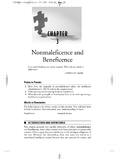Transcription of Ordinary Magic - Office of Children & Families in …
1 Ordinary MagicResilience Processes in DevelopmentAnn S. MastenUniversity of Minnesota, Twin Cities CampusThe study of resilience in development has overturnedmany negative assumptions and deficit-focused modelsabout Children growing up under the threat of disadvan-tage and adversity. The most surprising conclusion emerg-ing from studies of these Children is the ordinariness ofresilience. An examination of converging findings fromvariable-focused and person-focused investigations ofthese phenomena suggests that resilience is common andthat it usually arises from the normative functions of humanadaptational systems, with the greatest threats to humandevelopment being those that compromise these protectivesystems.
2 The conclusion that resilience is made of ordinaryrather than extraordinary processes offers a more positiveoutlook on human development and adaptation, as well asdirection for policy and practice aimed at enhancing thedevelopment of Children at risk for problems and the 1970s, a group of pioneering psycholo-gists and psychiatrists began to draw the attentionof scientists to the phenomenon of resilience inchildren at risk for psychopathology and problems in de-velopment due to genetic or experiential pioneers argued that research on Children who de-veloped well in the context of risk or adversity held thepotential to inform theories of etiology in psychopathologyand to learn what makes a difference in the lives of childrenat risk that could guide intervention and policy (Anthony,1974; Garmezy, 1971, 1974.)
3 Murphy, 1974; Murphy &Moriarty, 1976; Rutter, 1979; Werner & Smith, 1982).Their calls to action inspired two decades of investigationthat has yielded models, methods, and data about thisfamily of phenomena, as well as controversies, criticisms,and media attention (Luthar, Cicchetti, & Becker, 2000;Masten, 1999b; Masten & Coatsworth, 1998).The recognition and study of resilient Children hasoverturned many negative assumptions and deficit-focusedmodels about the development of Children growing upunder the threat of disadvantage and adversity.
4 At the sametime, the picture emerging from the systematic study ofresilience suggests that some of the original assumptionsabout this class of phenomena were wrong, or at leastmisleading. Early images of resilience in both scholarlywork and mass media implied that there was somethingremarkable or special about these Children , often describedby words such as invulnerable, or invincible. One of theearliest news articles about resilience in American psychol-ogy was about "the invulnerables" in the APA Monitor(Pines, 1975). Similarly, a headline about this new researchfield in the Washington Post on March 7, 1976, read,"Trouble's a Bubble to Some Kids.
5 " The idea of resilientchildren as remarkable individuals possessing extraordi-nary strength or inner resiliency has lingered, even inscholarly work. In 1995, "Superkids of the Ghetto" ap-peared as the title for a book review on resilience ininner-city Children published in Contemporary Psychology(Buggie, 1995).The great surprise of resilience research is the ordi-nariness of the phenomena. Resilience appears to be acommon phenomenon that results in most cases from theoperation of basic human adaptational systems. If thosesystems are protected and in good working order, develop-ment is robust even in the face of severe adversity; if thesemajor systems are impaired, antecedent or consequent toadversity, then the risk for developmental problems ismuch greater, particularly if the environmental hazards areprolonged.
6 In this article, I highlight recent evidence accu-mulating from two major approaches to the study of resil-ience, one focused on variables and one focused on also discuss the implications of resilience models andfindings for research, practice, and policies aimed at un-derstanding and changing the life course of Children indevelopmental 's note. Kennon M. Sheldon and Laura King developed thisPositive Psychology 's note. I have had the great fortune of interacting with manyresilience researchers over the years who have contributed immeasurablyto my thinking about this class of phenomena.
7 Most particularly, I want tothank the following for our illuminating conversations: Norman Garmezy,Suniya Luthar, Michael Rutter, Auke Tellegen, Emmy Werner, and Mar-garet Wright. Thanks also go to Marie-Gabrielle Reed, Jenifer Powell,John Curtis, Art Sesma, and Robin Mathy for their comments on thisarticle. The writing of this article, as well as my research on resilience, hasbeen facilitated by National Science Foundation Grant NSF/SBR-9729111, the William T. Grant Foundation Grant 97-1845-97, and mem-bership in the Research Network on Psychopathology and Development,funded by the John D.
8 And Catherine T. MacArthur concerning this article should be addressed to AnnS. Masten, Institute of Child Development, University of Minnesota, 51 East River Road, Minneapolis, MN 55455-0345. Electronic mail may besent to 2001 American PsychologistCopyright 2001 by the American Psychological Association, Inc. 0003-066X/01/$ 56, No. 3, 227-238 DOI: ResilienceResilience refers to a class of phenomena characterized bygood outcomes in spile of serious threats to adaptation ordevelopment. Research on resilience aims to understand theprocesses that account for these good outcomes.
9 Resilienceis an inferential and contextual construct that requires twomajor kinds of judgments (Masten, 1999b; Masten & Coats-worth, 1998). The first judgment addresses the threat sideof the inference, individuals are noi considered resilient ifthere has never been a significant threat to their develop-ment; there must be current or past hazards judged to havethe potentiai to derail normative development. In otherwords, there must be demonstrable risk. In many cases,risks are actuarially based predictors of undesirable out-comes drawn from evidence that this status or condition isstatistically associated with higher probability of a "bad"outcome in the future (Kraemer et at, 1997; Masten &Garmezy, 1985).
10 Many risk factors, ranging from statusvariables such as biological child of a parent with schizo-phrenia or low socioeconomic status to direct measures ofexposure to maltreatment or violence, are well-establishedstatistical predictors of subsequent developmental prob-lems, either specific problems or a broad spectrum ofdifficulties (Masten & Garmezy, 1985; Masten & Wright,1998).In studies of resilience, the risk side of the definitionhas been operationally defined in diverse ways, includingsocioeconomic status (SES) measures, tabulations of thenumber of life events that have occurred in recent monthsor a lifetime, massive community trauma, low birth weight,divorce, and cumulative risk calculations that combinethese different kinds of risk factors.







